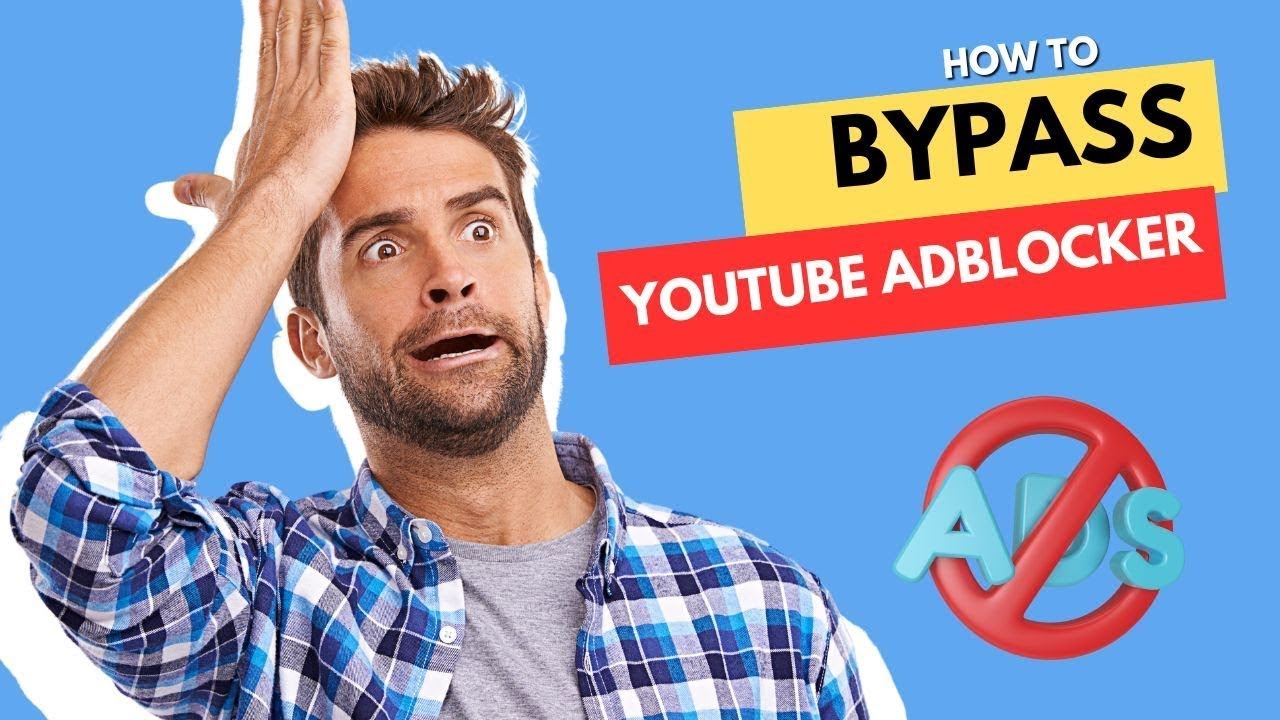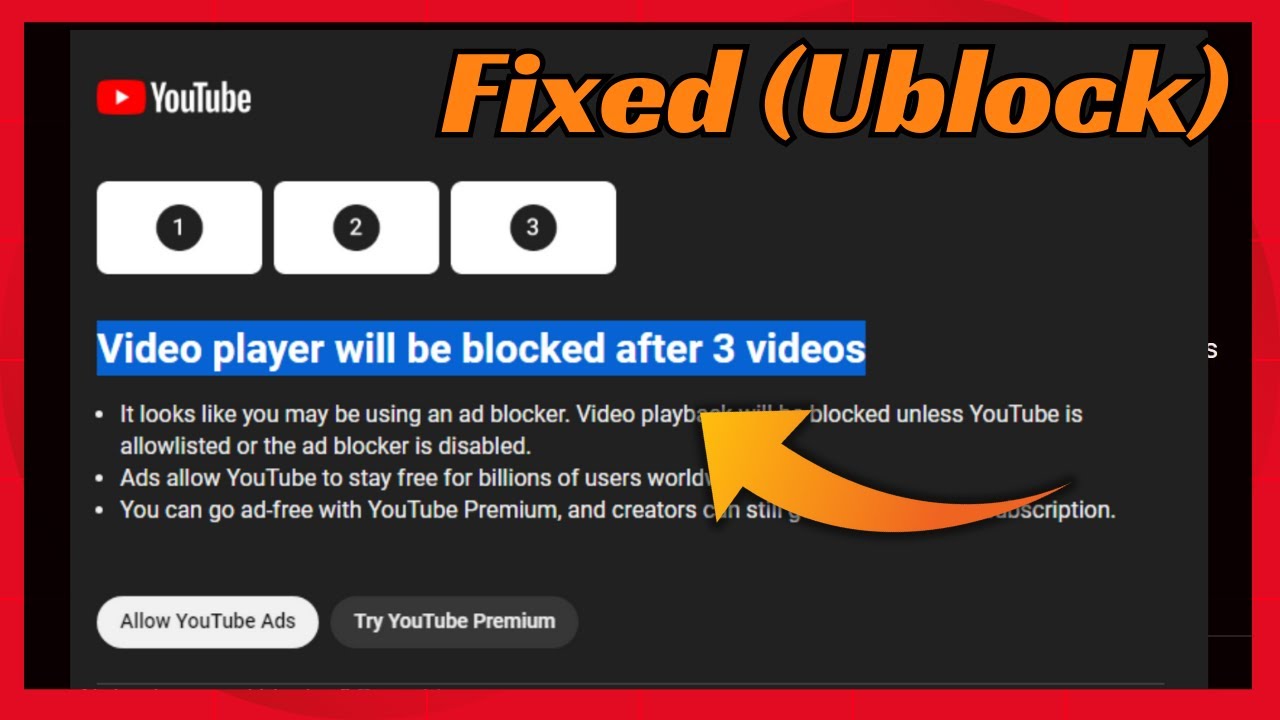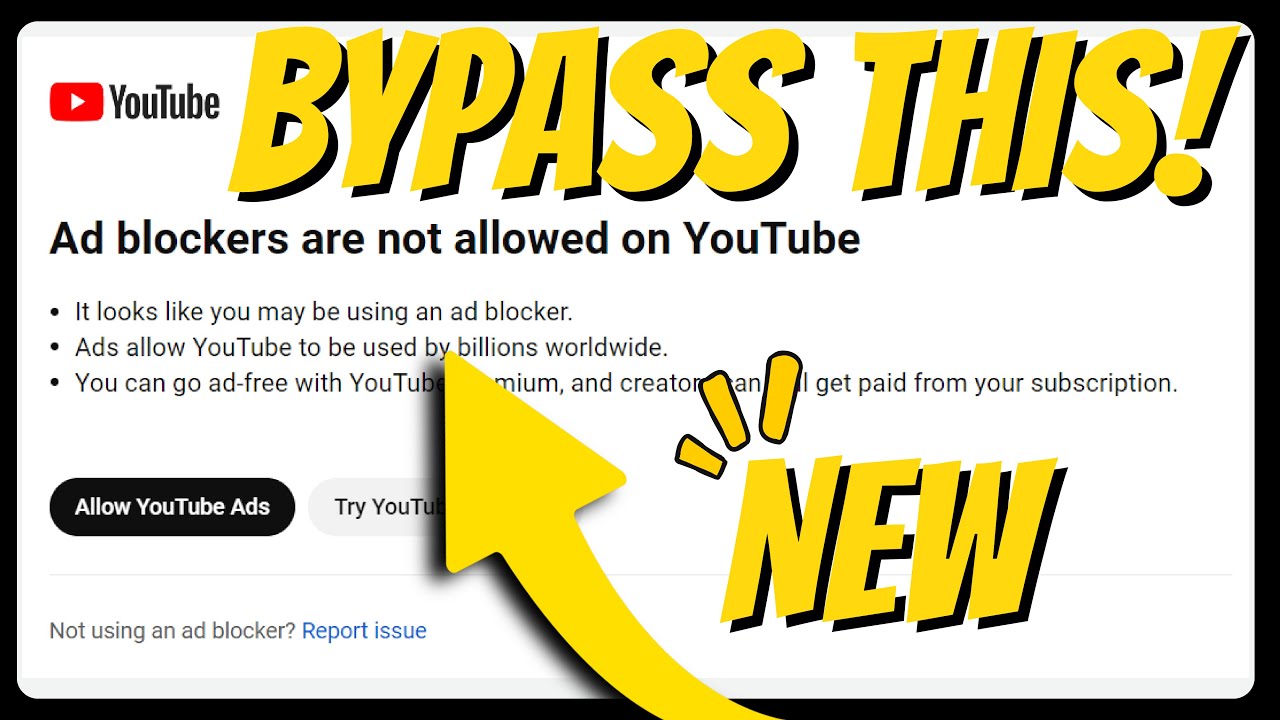Are you tired of those pesky YouTube ads interrupting your favorite videos? You're not alone! Many viewers use ad blockers to enhance their viewing experience, but YouTube has implemented measures to detect and hinder these tools. In this blog post, we’ll explore some clever ways to bypass
Understanding YouTube's Adblocker Detection

YouTube's adblocker detection system is designed to ensure creators and the platform itself continue to generate revenue through advertisements. When an ad blocker is detected, it may either prevent videos from playing or display a message urging users to disable their adblockers. But how exactly does YouTube know you're using one? Let’s break it down:
- Tracking Scripts: YouTube employs tracking scripts that analyze your browser's behavior. If it detects that you're blocking ads, it can limit your access to content.
- Element Removal: The platform checks for the absence of certain elements related to ad displays. If these elements are missing, it’s a clear sign that an adblocker is in use.
- Javascript Detection: YouTube uses JavaScript to identify ad blockers by trying to load advertisements. If the ads fail to load due to a blocker, the detection mechanism springs into action.
Understanding this mechanism can help you find ways around it. Here are some common detection methods YouTube employs:
| Detection Method | How It Works |
|---|---|
| Check for Ad IFrames | It searches for embedded iframes that are typically used to serve ads. If they're missing, it flags the use of adblockers. |
| Network Requests | YouTube monitors network requests made during video playback. If ad requests are consistently blocked, it raises a red flag. |
| Time Delay on Playback | Sometimes, ads are delayed intentionally to see if a user skips them, which could indicate an adblocker. |
Knowing how YouTube operates can help users strategize their approach. There are multiple ways to circumvent this detection without compromising your viewing experience. However, keep in mind that while these methods may work temporarily, YouTube frequently updates its systems to counteract adblocker circumvention, so what works today might not work tomorrow!
In the next sections, we’ll discuss specific techniques to help you continue watching your favorite content without interruption. Stay tuned as we explore these workarounds in detail!
Also Read This: Can You Get YouTube Music on Xbox? Accessing YouTube's Music Service on Xbox Consoles
3. Common Methods to Bypass Adblocker Detection

When it comes to enjoying uninterrupted videos on YouTube, bypassing adblocker detection can feel like a never-ending cat-and-mouse game. Fortunately, there are several techniques that users have found helpful. Let’s delve into some of the more common methods that might allow you to watch your favorite videos without pesky ads interrupting your flow.
1. Whitelisting YouTube:
This might sound simple, but sometimes just disabling your adblocker for YouTube can be enough. Many adblockers allow you to create a whitelist of websites that you wish to support. When you whitelist YouTube, you can enjoy all the content without any ads being blocked. Just remember to only disable it for YouTube and not for the entire web!
2. Using Alternate Browsers:
Some browsers come with built-in functions to bypass adblocker detection. For instance, using browsers like Brave or Opera, which have ad-blocking capabilities integrated within, can provide a smoother YouTube experience. These browsers may not trigger adblocker detection as traditional Chrome or Firefox might.
3. Editing Browser Extensions:
If you’re a little tech-savvy, you might consider editing your adblocker’s settings. Some extensions allow you to modify filters. By tweaking these settings, you might find a way to prevent YouTube from detecting your adblocker. Just be cautious and make backups of your settings in case something goes awry.
4. Script Blockers:
Using script blockers like NoScript can help. These tools allow you to selectively disable scripts that YouTube uses to detect adblockers. By filtering out specific scripts, you might enjoy an ad-free experience while still accessing all the features of the site.
5. VPN Services:
A VPN (Virtual Private Network) can help you mask your location and sometimes bypass content restrictions. While it’s not a guaranteed solution for adblocker detection, using a VPN can potentially give you access to content without the intrusive ads exposing your browsing patterns.
While all these methods can be helpful, it’s essential to remember the impact of ads on content creators who rely on views for revenue. Consider supporting your favorite channels in other ways if you choose to bypass these ads!
Also Read This: How to Get YouTube to Play in the Background on Your Device
4. Using Alternatives to YouTube for Ad-Free Viewing

If dealing with YouTube's adblocker detection feels like too much of a hassle, or if you’re simply looking for ad-free alternatives for your video viewing, there are several other platforms worth exploring. Here are some popular options that let you enjoy videos without all the interruptions:
- Vimeo: Known for its high-quality videos and a more artistic community, Vimeo offers an ad-free experience. You can find a lot of indie films, documentaries, and artistic content here.
- Dailymotion: This platform is similar to YouTube and provides a range of videos across genres. While it does have ads, they are less frequent, and you might find some content that isn’t available on YouTube.
- Twitch: If you’re into gaming or live streams, Twitch is a fantastic option. While it does have ads, many streamers offer ad-free viewing options through subscriptions.
- PeerTube: This decentralized option is great for those who want to support independent creators. It operates through a network of interconnected video instances and is completely ad-free.
- Certain Streaming Platforms: Services like Netflix, Hulu, and Amazon Prime Video offer tons of content without ads. Although they require subscriptions, the ad-free viewing experience can be worth the investment.
Each of these platforms has its strengths, and depending on what you're looking for—be it indie films, gaming content, or original series—there’s something for everyone. By exploring these alternatives, you might just find a new favorite way to watch videos without the hassle of ads disrupting your experience.
Also Read This: How to Clear YouTube Cache Data on iPhones for a Smoother Experience
5. Tips for Configuring Your Adblocker
So, you've decided to take control of your YouTube viewing experience by using an adblocker. Excellent choice! However, it’s not just about installing one; configuring it properly is key to ensuring you don't run into detection issues. Here are some practical tips to help you set up your adblocker effectively:
- Whitelist YouTube: Many adblockers allow you to whitelist specific sites. Instead of turning off the adblocker completely (which defeats the purpose), consider whitelisting YouTube and toggling your adblocker for specific videos or channels if they're too persistent.
- Use Custom Filters: If you’re tech-savvy, delve into adding custom filters. These filters can block specific elements on the page, including the scripts that trigger detection mechanisms. Check forums or communities for shared filter lists that focus on YouTube.
- Update Regularly: Adblocker updates are crucial. YouTube frequently alters its detection techniques, so keeping your adblocker updated ensures you’re equipped with the latest defenses against those pesky ads.
- Choose the Right Extensions: Not all adblockers are created equal. Some are better suited for bypassing ad detection than others. Consider trying popular ones like uBlock Origin or AdGuard, which have strong community support and detailed configurations.
- Clear Cache and Cookies: Sometimes, the issue might not just be your adblocker but also old cache and cookies that could trigger detection. Regularly clear your browser's cache to keep everything fresh and improve the performance of your adblocker.
By following these tips, you enhance the effectiveness of your adblocker and reduce the chances of getting hit with that annoying detection screen!
Also Read This: Watching the Super Bowl on YouTube TV What You Need to Know
6. The Role of VPNs in Avoiding Adblocker Detection
Ah, the ever-reliable VPN (Virtual Private Network)! If you’re serious about streaming videos without interruptions or limitations, a VPN can play a significant role in bypassing YouTube adblocker detection. Here’s why adding a VPN to your adblocking arsenal is a smart move:
- Mask Your IP Address: When you use a VPN, your real IP address is hidden, making it harder for YouTube to track your activity. This added layer of anonymity can protect you from detection mechanisms that rely on IP tracking.
- Access Different Servers: A VPN allows you to connect to servers in different regions. This can help you access content or features that may not be available locally, and sometimes adblocker detection varies by region.
- Bypass Geographic Restrictions: In some regions, certain adblocker detection features might be more strict. By using a VPN, you can connect to a more lenient region and enjoy a smoother viewing experience.
- Improve Security: A VPN encrypts your internet connection, providing enhanced security when streaming. It protects against potential data leaks, ensuring that your browsing habits remain private.
- Personalized Settings: Many VPNs come with features that allow you to configure your settings to optimize streaming. Look for options like split tunneling, which lets you decide which applications or websites go through the VPN.
With a solid VPN service, your YouTube experience can become not only ad-free but also more secure and flexible. Just remember to choose a reputable VPN provider known for speed and reliability to ensure you don’t sacrifice video quality!
Also Read This: How to Delete Watched Recordings from Your YouTube TV Library
7. Legal Considerations When Bypassing Adblocker Detection
As we delve into the world of bypassing YouTube adblocker detection, it’s essential to pause and reflect on some legal considerations. The internet is a fantastic resource, but it also comes with a set of rules and regulations.
First, let's address the fundamental question: Is it illegal to bypass adblocker detection? The answer can be a bit complex. While using an adblocker itself is generally legal, some methods of circumventing detection can tread into murky waters, especially if they're against the platform's terms of service.
The most important thing to remember is that platforms like YouTube have Terms of Service which users agree to when they create an account. These terms typically include clauses that prohibit the use of automated means (like scrapers, bots, or certain scripts) to alter the way their service operates. By bypassing adblocker detection, you might unintentionally violate these terms.
Moreover, consider the Copyright Law implications. Sometimes, adcontent financing allows content creators to generate revenue for their work. When you bypass ads, you may affect how these creators get compensated, which could raise ethical issues along with potential legal concerns.
To stay on the right side of the law while enjoying ad-free content, consider the following:
- Review YouTube's Terms of Service: Ensure that you are familiar with what is and isn’t permitted on the platform.
- Support Creators: If you truly enjoy a channel, consider contributing through Patreon or other means, allowing them to continue producing content.
- Use Adblocker Responsively: Some adblockers allow you to whitelist specific channels or websites. This way, you can support creators while still enjoying fewer ads.
In summary, while it might be tempting to find ways around YouTube’s adblocker detection, being aware of the legal landscape and the ethical implications of your actions is crucial. The balance between a seamless viewing experience and supporting the content you love is something worth thinking about!
8. Conclusion
Bypassing YouTube adblocker detection can feel like a rebellious act in an age of ads that seem to never end, but it’s essential to approach this topic with consideration. Not only should you weigh the practical benefits and possible risks, but also embrace the community that you’re a part of as a viewer and supporter of creators.
While we’ve discussed various techniques and methods for reducing or eliminating ads, always bear in mind the potential legal implications. YouTube relies on advertisements to keep the platform running smoothly, and those funds help content creators bring engaging and innovative videos to our screens. By supporting creators in a way that respects their rights while enjoying content, you will maintain a healthy relationship with both platforms and creators.
At the end of the day, the choice is yours. Each method discussed can enhance your YouTube experience, but it’s essential to ensure that it aligns with both your values and the prevailing legal standards. So, whether you decide to embrace the ads, invest in premium subscriptions, or navigate a way around detection, remember that enjoying content responsibly is paramount.
Happy watching, and may your viewing experience be pleasant and enjoyable!
 admin
admin








